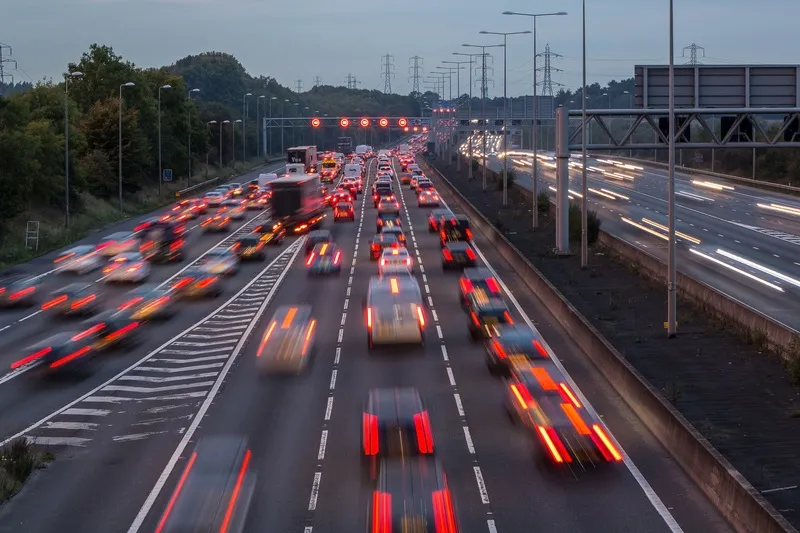
Long-term roadworks pose particular problems for temporary surveillance installations.
Converting the hard shoulder to a running lane, either full- or part-time, is the
Designing and implementing a number of these temporary CCTV monitoring systems for such projects is
In April 2015 work started on a new section of ‘managed motorway’ along 23km of the M1 (Junctions 32-35a) where the hard shoulder is being converted into a running lane. As often happens with motorway projects during the construction phase the hard shoulder is inaccessible to motorists, meaning there are no emergency telephones and motorists have nowhere to stop safely and summon assistance in event of a breakdown or accident. “Before any construction work can start, temporary cameras have to be set up at regular intervals along the length of the work zone to monitor the area and detect breakdowns, accidents or incidents. That’s where the CCTV solutions we deliver come in,” says Frank Gearon, project manager of highway industry specialist P&DSS, “The aim is to deliver a real-time overview of the entire stretch of works and link all the images from the cameras back to the 24/7 manned control room.”
The company is a NICEIC contractor certified under the Highways Agency’s Sector Scheme Approval to carry out electrical works on the motorway network. At the start of this latest M1 project, it will initially deploy 30 CCTV cameras and that number will eventually double as the project progresses. Images from the cameras are streamed to a temporary monitoring station where they are also recorded, and because construction work cannot start until the cameras are working, Gearon says speed of deployment and system reliability are paramount.
“We use fibre optic cables to cope with the long distances involved, and AMG’s transmission equipment as it requires a smaller number of fibres which speeds splicing during installation. On some of the earlier projects we used AMG’s 3700 series and since 2013 we’ve used the AMG 9024– multi-service Ethernet switch (M-SES) series known as the ‘Wonderbox’.”
The ‘Wonderbox’ was designed to bridge legacy CCTV systems with new IP cameras and provides Layer 2 managed Ethernet functionality without having to involve third party products. By integrating low-speed serial data channels and alarm contacts, alongside analogue video, onto an Ethernet backbone it ‘bridges the gap’ between analogue and ‘IP’ technologies.
Due to the need to keep the roads open for traffic, such projects often run for 18 – 24 months so the CCTV systems have to withstand prolonged exposure to ambient weather conditions, vibration and dust so systems need to be very robust.
However, that is not always enough as Gearon explains: “In major engineering projects like these, damage to cables and roadside equipment occurs frequently and there is a real risk of system failure, so on the M60/M62 project there was a requirement for a proprietary redundancy feature.
AMG was able to meet this need using the ‘X-ring’ to allow an unlimited number of M-SES units on each fibre loop, so sub-loops can be seamlessly added to provide redundancy protection in the case of a switch or fibre being damaged. And by integrating the dedicated video codec and RS232/RS485 into the MSES switch, video lag and control data is minimal.”
As the CCTV surveillance systems on the existing projects have operated over the winter period without a problem, the P&DSS/AMG solution appears to be lasting the distance.









